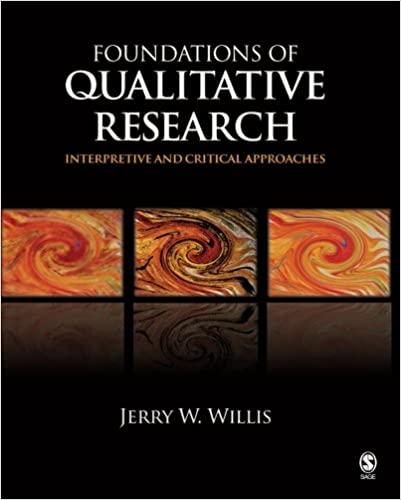Question
excerpts from an article by Dr. Aaron and answer the following question: To what extent should we not get too attached to attachment theory? Remember
excerpts from an article by Dr. Aaron and answer the following question:
To what extent should we "not get too attached" to attachment theory? Remember that "to what extent" questions require you to state "how much please help answer
Ainsworth concluded that secure children had all of their needs closely met by the caregiver, that anxious children experienced inconsistentcaregiving, while the avoidant children experienced some form of neglect.Further research discovered that children tended to have the same attachment styles as their parents. Using a test called theAdult Attachment Interview(AAI), other researchers concluded that attachment was relatively stable across the lifespan.
As such, attachment research using the AAI or Experiences in Close Relationships (ECR) has been utilized to gain further insight into variouspopulations being studied. Both the AAI and ECR are valid and reliable tests and so attachment is a real concept that can be measured. So far so good.
But this is where the train starts to headoff the rails.In clinical (counselling) settings,attachment has been used to seemingly explain everything seen in psychotherapy, frompsychopathologytorelationship disturbancestosexual proclivities, and has often been the main focus of clinical interventions. In its extreme form, practitioners ofattachment-based therapiesbelieve they can alter the attachment style of the client through the crucible-like effect of the therapeutic relationship.
But to buy into this belief system, we have to accept a few implicit assumptions. First, attachment is entirely environmentally constructed. In other words, the child is born a blank slate and the behavior of the caregiver,whether they were consistent or inconsistent (what does that mean and how is that even measured?) were the sole causative effects of an anxious or avoidant attachment style. This belief only leads to nervous parents fretting about the grievous implications of every single "mirroring" opportunity missed, and the creation of an entire style ofparentingcalledattachment parenting.
This viewpoint is beginningto be debunked. A recent article in thePsychological Bulletinfound that attachment "transmission" from caregiver to child is confounded by genetic variables of heritability. Attachment style is heritable just likeIQ,personality, and a whole host of other things, such as political leanings andspirituality. (Yes,political leaningsandspirituality, I'mnot kidding, click on the links.)
Second, attachment theory seems to have posited that attachment is some kind of a monolithic relational mind map that applies globally, but recentresearchshows that individuals can be attached in different ways to different people. Indeed the child can have a secure attachment to his mother, but an avoidant attachment to hisfather, and an anxious attachment to an aunt, and so on. Indeed the research I link to above found that "the relationship between father-child and mother-child attachment was not significant" and "parents' time away from their child was not a significant predictor of attachment."If attachment is context dependent, variable between relationships and not influenced by separation,then what really is its utility?
Finally and most perniciously, the use of attachment theory has often been used to pathologize non-normative sexualities. Under the guise of relational "normality" established by asocial constructionof what a secure relationship looks like, folks have been labeled asinsecurely attachedsimply for desiring sexual variety or displaying an interest in fetishistic activities. Hence, attachment-based therapists, especially those influenced byFreudianconcepts, will often take on the stance that the security of their stable, long-term therapeutic relationship will not only change the client's attachment style, but in this way also transform the "sexual deviant" into a stable, sexually conforming member of society.
Source:
Aaron, M (Aug 10, 2016). Why Attachment Theory is all Sizzle and no Steak. Psychology Today. Accessed at https://www.psychologytoday.com/ca/blog/standard-deviations/201608/why-attachment-theory-is-all-sizzle-and-no-steak
Step by Step Solution
There are 3 Steps involved in it
Step: 1

Get Instant Access to Expert-Tailored Solutions
See step-by-step solutions with expert insights and AI powered tools for academic success
Step: 2

Step: 3

Ace Your Homework with AI
Get the answers you need in no time with our AI-driven, step-by-step assistance
Get Started


